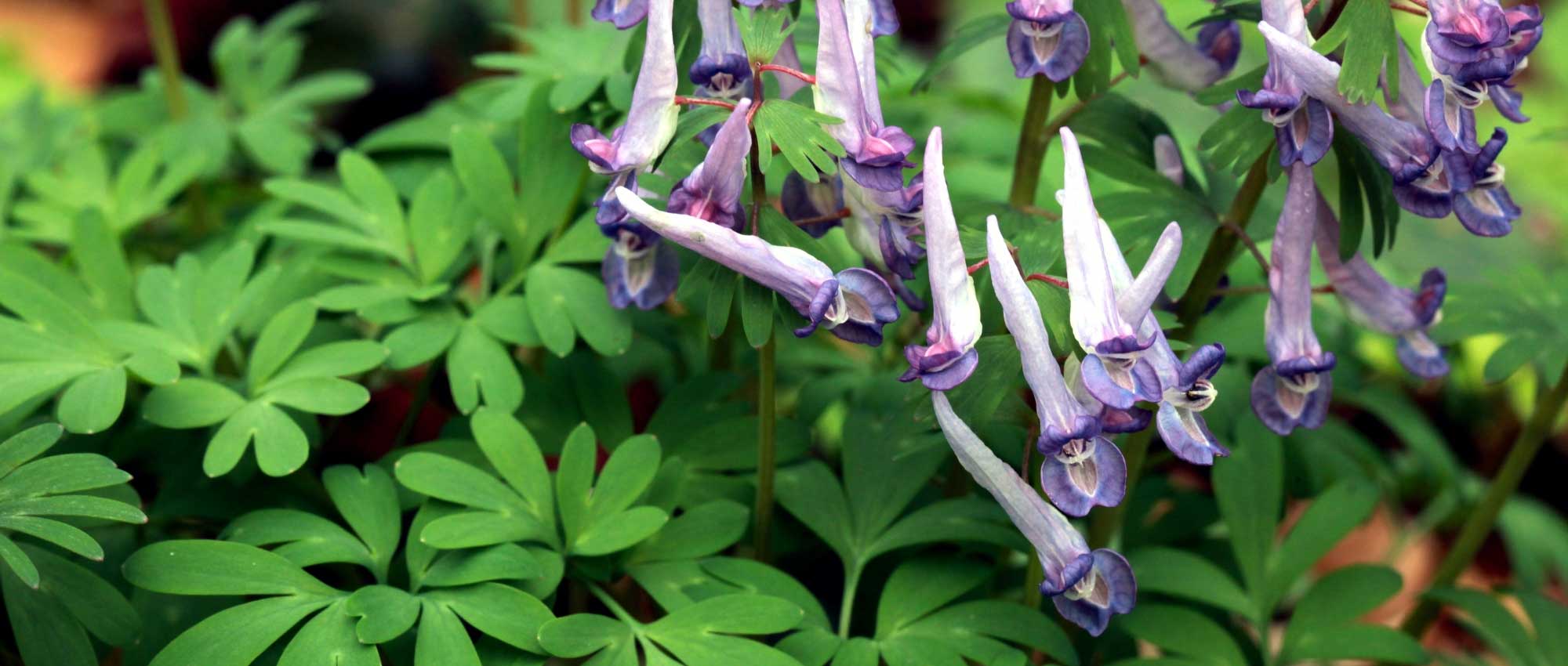
Corydalis: planting, growing and care
Contents
Corydalis in a nutshell
- Corydalis display small elongated flowers in shades of blue, mauve, yellow, red, or white.
- They offer a generous flowering, lasting a long time on very divided, light, feathery foliage.
- The leaves can take on various colours: green, bluish, purplish, brown, yellow…
- Corydalis tend to self-seed in the garden.
- They are ideal for woodland gardens and shaded rockeries.
- These are relatively easy to grow plants that require little maintenance.
A word from our Expert
Corydalis offer an original, unusual flowering, often in spring, but depending on the varieties, it can also last until autumn. The flowers take the form of an elongated, slender tube that opens into two lips and ends with a spur. They are often blue, mauve, or yellow, sometimes red or white. Corydalis are also appreciated for their very delicate, feathery foliage. It can take on beautiful shades, generally green, sometimes bluish, or even purple, chocolate brown, or yellow… These plants, available in different species and varieties, offer a choice of shapes and colours. Discover the very bright yellow flowering of Corydalis lutea, the stunning pink-red flowers of solid corydalis, or Corydalis solida, the mauve flowering of hollow corydalis, Corydalis cava, or the delicate blue flowers of Corydalis flexuosa.
Corydalis have a rather fragile appearance: they are small plants, with delicate flowering and light, feathery foliage. Despite this apparent fragility, they are easy to grow, quite hardy, robust, and not very susceptible to diseases! They require little maintenance. This is limited to watering in case of drought and possibly removing faded flowers.
Corydalis thrive especially in partial shade and are ideal for woodland gardens. They appreciate fertile, light, cool, and well-draining soil. These are plants that spread slowly, forming beautiful ground covers. They sometimes tend to self-seed spontaneously!
Description and Botany
Botanical data
- Latin name Corydalis sp.
- Family Papaveraceae
- Common name Corydalis
- Flowering often spring (between April and July), but sometimes until October
- Height often between 10 and 60 cm
- Sun exposure partial shade
- Soil type draining, cool, humus-bearing
- Hardiness at least down to -15 °C
The corydalis includes over 500 species of herbaceous plants. Those cultivated in gardens are perennials, but there are also annual species found in the wild. Corydalis originates from temperate zones of the Northern Hemisphere, primarily found in Europe, Asia, and North America. Many species come from China! This is particularly true for Corydalis flexuosa. In France, six species can be encountered in the wild, including Corydalis solida and Corydalis lutea (also known as Pseudofumaria lutea). Corydalis are mainly found in undergrowth, rocky environments, and often in mountainous regions. Some species also grow in the crevices of old stone walls. As they can be found in quite cold regions, sometimes at altitude, corydalis are hardy plants that withstand low temperatures well.
Corydalis belongs to the family Papaveraceae (about 900 species), like poppies and cornflowers! It is also the family of celandine, Dicentra (bleeding heart), Eschscholzia, and Meconopsis… Corydalis are very close to fumitories (genus Fumaria), and were previously classified in the family Fumariaceae. Fumitories are small plants that grow spontaneously and are sometimes considered weeds. They also have, like corydalis, long and slender flowers gathered in clusters. However, corydalis flowers are much larger than those of fumitories. Some Corydalis have changed their genus name to Pseudofumaria. This is the case for Corydalis lutea, which has been renamed Pseudofumaria lutea.
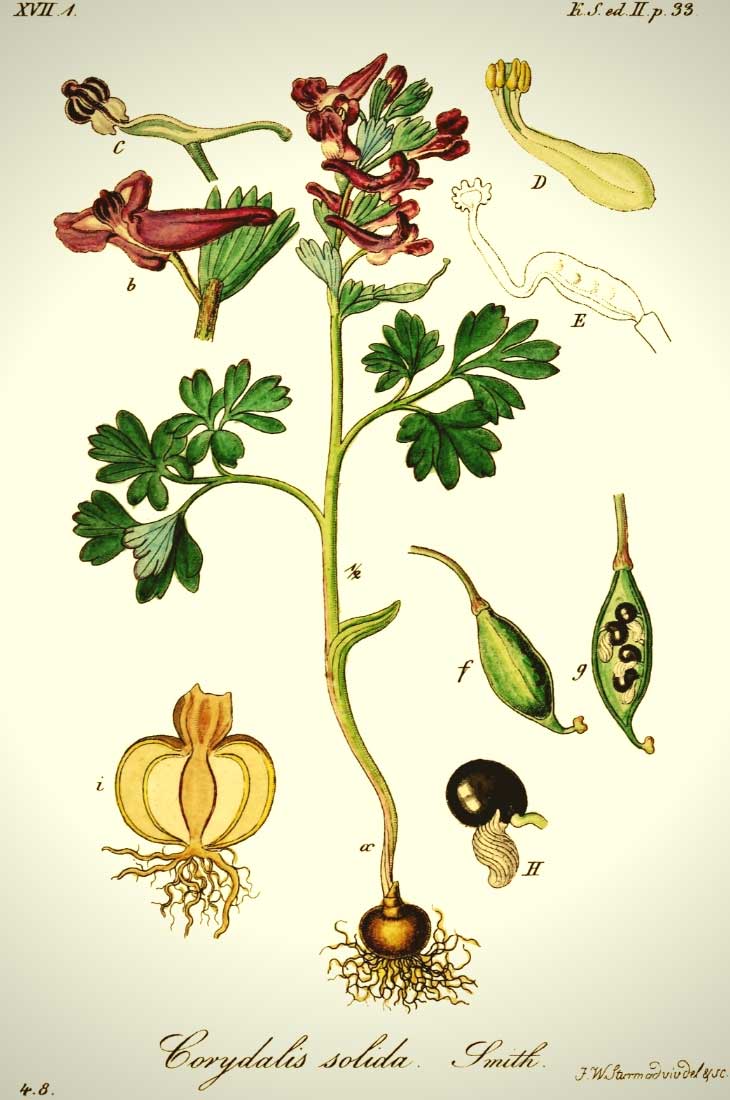
Corydalis solida: botanical illustration
The name corydalis comes from the Greek κορυδός (korudós), meaning “crested lark,” referring to the spur of the flower, whose shape resembles the crest of a lark. It is perhaps also in reference to the lark that several varieties include the word bird in their name in English (bird): ‘Purple Bird’, ‘Firebird’…
Corydalis form small tufts, often not very tall. They have stolons and gradually spread, potentially forming a true ground cover over time. Corydalis typically measure between 10 and 60 cm tall… or a bit more in some species, such as Corydalis scouleri (up to 90 cm).
Corydalis offer abundant flowering and relatively long-lasting blooms. They generally flower in spring, in May-June, sometimes until July. However, some species bloom for a very long time, until autumn. This is the case for Corydalis lutea, which flowers from May to October! Corydalis can also be very early: the variety ‘Beth Evans’ produces flowers in March-April. Finally, some species that flower in spring interrupt their flowering in summer, then bloom again in autumn.
The flowers are gathered in clusters, usually terminal, at the end of the stems, and positioned above the foliage. The flowers are elongated, held horizontally, perpendicular to the stems.
The clusters bear up to 20 small flowers, measuring between 1 and 3 cm in length. They have a fine and elongated, tubular shape, thanks to a spur that extends the flower backward. They are irregular, with bilateral symmetry, the tube opening into two lips.
The flowers consist of two small triangular sepals that wither quite early, and four free petals. Thus, there are two outer petals, the upper one extended into a spur, reflexed backward. They surround two inner petals, which meet and envelop the reproductive organs: six stamens (divided into two groups) and the style. Thus, the petals shelter and protect the male and female organs. The petals forming the spur open into a mouth, composed of two lips.
Corydalis flowers are often blue or purple. They can take on an intense shade, electric blue. They are bright yellow in Corydalis lutea, bringing a lot of brightness! It is rarer, but flowers can be red, as seen in the variety ‘Firebird’. As for the species Corydalis ochroleuca, it bears an elegant white flowering, which stands out beautifully against the light green foliage! In French, it is called Corydale with milk flowers.
The flowers are generally solid-coloured but shaded (a bit lighter or darker from one end to the other). They are bicoloured, yellow and pink, in Corydalis sempervirens.
The variety ‘Blue Line’ is appreciated for its sweet scent, reminiscent of honey.

The flowering of corydalis. Corydalis cava (photo Michael Apel), Corydalis flexuosa ‘Blue Panda’ (photo David J. Stang), Corydalis pallida var. tenuis and Corydalis sempervirens (photo Jason Hollinger)
Corydalis have superb foliage, finely divided, making it light and feathery. It resembles that of chervil or bleeding hearts. The leaves have a triangular outline and measure, in the most common species, between 5 and 15 cm long; but they can reach 40 cm in other varieties. They are often alternate, inserted one after the other on the stems, but can also be opposite.
The leaves generally have a beautiful green colour, and are sometimes bluish, glaucous. Corydalis lutea has bright, tender, fresh green foliage. The foliage can be both light and bright (for example, in the variety ‘Berry Exciting’, it is bright yellow!), or very dark (Corydalis ‘Purple Leaf’, with purple leaves)… The Corydalis quantmeyerana ‘Chocolate Stars’ has beautiful foliage of reddish-brown hue.
The stems and petioles of corydalis are often slightly reddish.

The foliage of corydalis, light and finely divided. Corydalis solida (Bjoertvedt), Corydalis ‘Blackberry Wine’ and Corydalis quantmeyeriana ‘Chocolate Stars’
Sometimes, corydalis, after flowering in spring, enter dormancy for the summer… especially when it is hot and dry. They then leave space in the beds for summer-flowering perennials. It is wise to mark their location to remember they are there and not damage them while arranging the bed. Corydalis can then reappear in autumn when temperatures soften.
Just as they flee the heat and summer dryness by temporarily disappearing, corydalis are deciduous or evergreen depending on winter temperatures. They can retain their leaves if it is not too cold.
In general, corydalis form tubers or rhizomes (swollen underground organs containing nutrient reserves), as well as stolons that allow them to spread and form increasingly wide tufts. Corydalis solida, also known as Corydalis with full bulb, gets its name from its underground bulb that has no space between the layers that compose it.
The fruit of corydalis is an elongated capsule, measuring up to 2.5 cm long, and opens when the seeds are ripe. It then releases many small black seeds. You can collect them to sow, but they do not keep for long. Corydalis often tend to self-seed without intervention. Their seeds carry elaiosomes, small outgrowths rich in proteins and lipids, appreciated by ants. They come to seek the seeds, taking them to the anthill for their larvae to consume the elaiosomes, ensuring seed dispersal.

The capsules of Corydalis solida (photo Bff), and those of Corydalis intermedia, containing black seeds (photo Kenraiz, Krzysztof Ziarnek)
Corydalis are very hardy plants. They withstand at least down to -15 °C. They can retain their foliage in winter if temperatures are mild, but lose it if winter is cold.
Corydalis is a short-lived perennial but tends to spread and self-seed. However, it is not an invasive plant! It is easy to limit its expansion.
The main varieties of corydalis
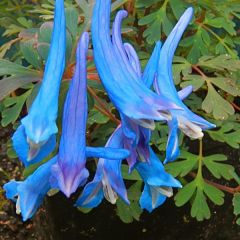
Corydalis flexuosa
- Flowering time May to July
- Height at maturity 30 cm
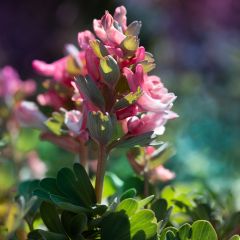
Corydalis solida Beth Evans
- Flowering time April, May
- Height at maturity 15 cm
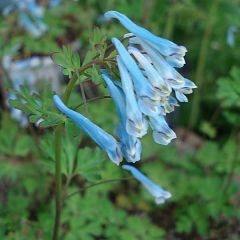
Corydalis flexuosa Blue Panda
- Flowering time June, July
- Height at maturity 25 cm
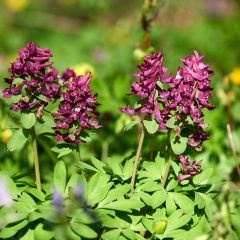
Corydalis solida Purple Bird
- Flowering time April, May
- Height at maturity 20 cm
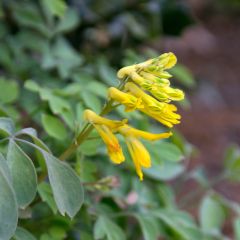
Corydalis lutea
- Flowering time June to November
- Height at maturity 40 cm
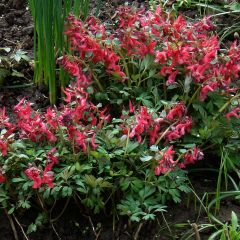
Corydalis solida Firebird
- Flowering time April, May
- Height at maturity 15 cm
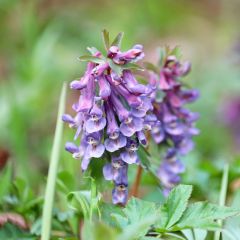
Corydalis solida
- Flowering time April, May
- Height at maturity 15 cm
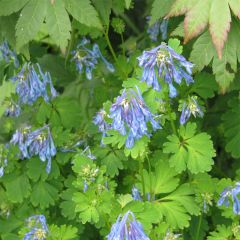
Corydalis flexuosa Purple Leaf
- Flowering time May, June
- Height at maturity 30 cm
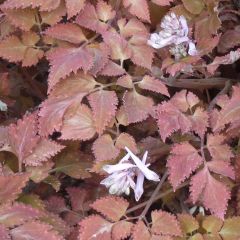
Corydalis colquantmeyeriana Chocolate Stars
- Flowering time June
- Height at maturity 40 cm
Discover other Corydalis
View all →Available in 1 sizes
Available in 1 sizes
Available in 2 sizes
Available in 1 sizes
Available in 1 sizes
Available in 1 sizes
Available in 1 sizes
Available in 1 sizes
Available in 1 sizes
Available in 1 sizes
Planting
Where to plant?
Plant the corydalis preferably in partial shade, under dappled sunlight. It is indeed better to avoid overly hot and scorching exposures. It is an excellent understorey plant (in nature, it is often found in forests!). Its flowers will bring brightness to the shaded areas of the garden!
Plant the corydalis in well-drained soil, as it does not like soils that retain water in winter. However, it appreciates cool soils that are not too dry in summer. Avoid overly heavy, clayey, and compact soils, as well as excessively calcareous terrains.
Grow corydalis preferably in soil rich in humus, fertile, and light. The ideal is a type of understorey soil, such as that found in forests.
Corydalis can easily be integrated into a slightly shaded rockery. In this case, we recommend Corydalis solida. If you choose to grow them in the understorey, in a very natural-style garden, opt for Corydalis flexuosa, for example. You can plant it as ground cover at the base of trees and bushes. Corydalis can also be included in a perennial bed or a border, in partial shade, alongside decorative foliage or spring-flowering plants, in a fresh and delicate, light style. Preferably place them at the front of the beds, in front of taller plants. Corydalis are perfect at the foot of stone walls. You can also integrate them into a heather soil bed.
When to plant?
You can plant corydalis in spring, around April, or in autumn, in September or October.
How to plant?
- You can place the root ball in a basin filled with water to allow it to rehydrate. This will help the plant establish itself.
- Dig a planting hole that is two to three times the size of the root ball. If necessary, add compost to enrich the soil, or gravel to improve drainage.
- Plant your corydalis by placing it in the planting hole.
- Replace the soil all around. Then, gently firm it down with the palm of your hand.
- Water generously.
It is advisable to continue watering in the weeks that follow, to help the plant settle in well and start its growth.
Also, discover our video tips on planting perennials:
Read also
Ferns: growing and plantingCare
Corydalis require little maintenance. However, we suggest watering during prolonged dry spells. At the beginning of spring, before flowering, it is advisable to spread some well-decomposed compost around your corydalis to enrich the soil.
You can remove faded flowers for aesthetic purposes, but also to prevent self-seeding, in case you wish to avoid the plant spreading too much in the garden. This is a way to limit its expansion. Additionally, regularly removing faded flowers encourages the plant to produce new flower buds.
We recommend applying a mulch around your plants, as this will help maintain soil moisture and limit the growth of adventive plants. Use dead leaves, linseed mulch, or ramial chipped wood (RCW) for this purpose.
Corydalis that enter dormancy during the summer will appreciate having relatively dry soil during this period.
As corydalis can spread and self-seed generously if it finds conditions it likes, it may need to be contained or limited.
Do not worry if the plant disappears in winter or summer. Some corydalis are deciduous, losing their leaves when temperatures are cold. They can also enter dormancy in summer, especially if the weather is hot and dry. It is best to mark their location with a small stake or label to remind you they are there and to avoid damaging them if you work in the same bed!
Corydalis are not very susceptible to diseases and pests. However, be cautious of gastropods – slugs and snails – which can nibble on the foliage. If this is the case, you can make a slug trap or place coffee grounds, ashes, or sawdust around your plants to create a barrier. The bulbous corydalis, Corydalis solida, can be affected by downy mildew.
Multiplication: sowing, division
Corydalis can be multiplied by division or by sowing. The corydalis tends to self-seed without intervention. A very good technique for obtaining new plants is to collect the spontaneous seedlings, by digging them up and replanting them in another location. Multiplying corydalis can help you quickly create large carpets in woodland areas, assisting the plant in spreading.
Sowing
Sow the seeds while they are still fresh, as soon as you have harvested them. They quickly lose their seed viability. Sowing should therefore take place in autumn. Seeds should be collected just before the capsule is fully ripe, otherwise, it will open and disperse them immediately.
Seeds germinate better after undergoing a period of cold. We recommend placing them in the refrigerator for a few weeks before sowing (stratification).
- Prepare a pot by filling it with special seed compost. Lightly firm it down and level the surface to create a flat area.
- Place the seeds on the surface. Do not cover with soil as they need light to grow.
- Water gently.
Place the pot under a frame, in a bright location but sheltered from direct sunlight. Ensure that the substrate remains slightly moist. The seeds will germinate in spring.
You can also sow the seeds directly in the ground.
Division of clumps
The division of corydalis is mainly done in autumn (spring-flowering species), but can be carried out in spring for summer-flowering corydalis. Carefully dig up and take a clump of corydalis to replant in another location in the garden, after preparing the soil. Be careful as the stems are fragile and can easily break.
Association
Corydalis are ideal for shady gardens and woodland gardens, alongside plants with decorative foliage. Plant them under deciduous trees, pairing them with ferns, brunneras, Solomon’s seals… Create a very natural scene with Bleeding Hearts, Bluebells (Hyacinthoides non-scripta), Bellflowers, and Tiarella. Also enjoy the lovely flowering of epimediums! Discover the elegant foliage of Paris verticillata. With its yellow flowers and soft green foliage, Corydalis lutea is perfect for bringing brightness to the undergrowth! You can pair corydalis with the stunning Geranium nodosum. Corydalis look splendid alongside ferns: choose Cyrtomium, Dryopteris, or Polystichum to accompany them. Plants with decorative foliage will provide a beautiful backdrop without overshadowing their flowering with overly bright hues. As corydalis prefer cool soils, you can place them near a water feature (pond, stream…), for example with ferns and marginal plants, to create a very natural scene!

Corydalis can fit into a woodland garden, with decorative foliage and bright flowers, for a very natural style. Corydalis solida (photo Christian Fischer), Dicentra spectabilis, Dryopteris cycadina, and Anemone nemorosa (photo Pandano)
You can plant corydalis in a mineral garden or a semi-shaded rockery. Plant it alongside saxifrages, rock garden geraniums, sedums… You can also establish it at the base of old stone walls, or even directly on the walls, with Cymbalaria muralis, bellflowers, wallflowers, centranthuses… Add some small ferns like Asplenium trichomanes or polypodies. For planting on a wall, we recommend choosing the species Corydalis solida.
Corydalis can be integrated into a colourful mixed border with other perennials. Plant some shrubs like hydrangeas, viburnums, or deutzia at the back of the bed, and place ligularias, heucheras, gypsophilas, and astrantias in front of them… Add colour with Bleeding Hearts, and also enjoy the lovely flowering of hardy geraniums. You can incorporate some small bulbous plants like muscari.
You can create a beautiful spring scene, with bulbs and perennials that bloom early in the year, as soon as temperatures begin to warm. Choose bulbs like muscari, chionodoxa, botanical tulips, Siberian squills, Fritillaria meleagris, or puschkinia… You can add wood anemones and pulmonarias… This will also create a fairly natural atmosphere! Discover the delicate flowering of Erythronium.
→ Learn more in our advice sheet: Pairing Corydalis
Did you know?
- A medicinal plant
Corydalis is a plant commonly used in traditional Chinese medicine. It helps combat chronic pain and headaches. The species Corydalis solida can be used for brain disorders, including Parkinson’s disease.
Useful resources
-
- Discover our range of corydalis quickly!
- Follow our buying guide to choose a Corydalis well
- An article by Michael – Planting under trees
- Our advice sheet: Associating Corydalis
- Also discover the bulbous Corydalis
Frequently asked questions
-
The leaves of my corydalis are holey and nibbled... What should I do?
Snails and slugs enjoy the tender foliage of Corydalis! To get rid of them, you can make a slug trap or use Ferramol slug pellets.
-
Why is my corydalis disappearing and losing its leaves?
Corydalis are plants that can be deciduous or evergreen, depending on the species and temperatures. If this occurs in autumn, with the cold, it is likely that your corydalis is deciduous and will simply lose its leaves for the winter. It will develop new leaves in spring. Some species also enter dormancy for the summer, escaping the heat and drought. There is a good chance they will reappear afterwards. Corydalis may therefore sometimes disappear to enter dormancy when it is too hot or conversely too cold! They return when temperatures soften.
- Subscribe!
- Contents
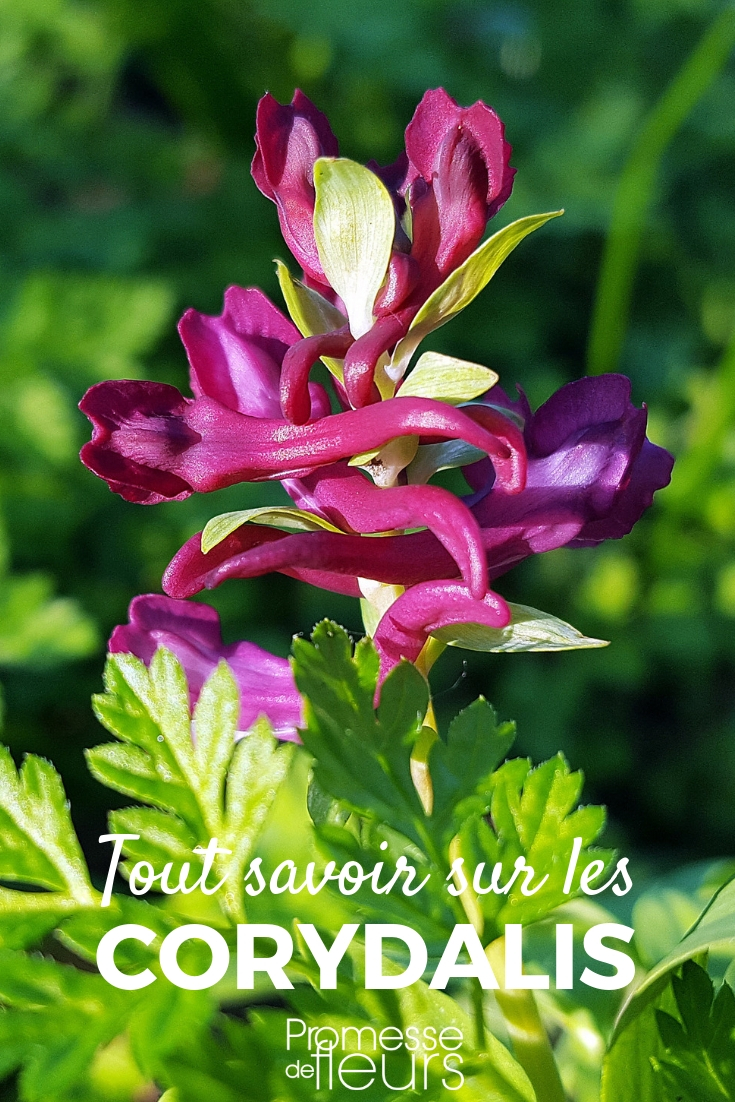































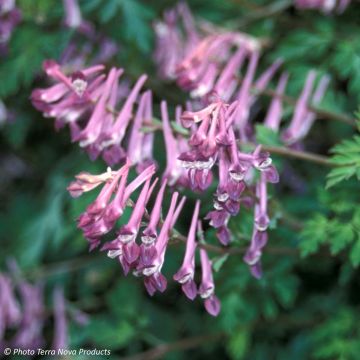
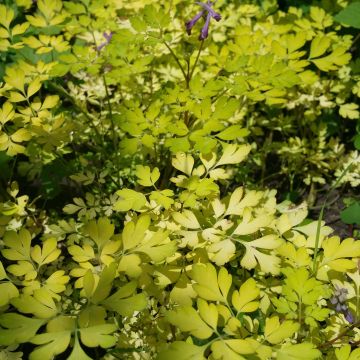
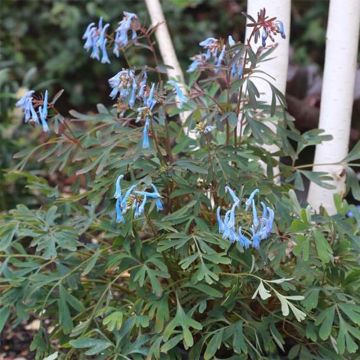

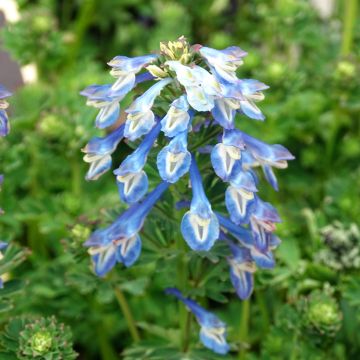



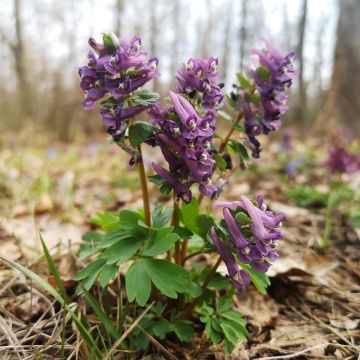

Comments